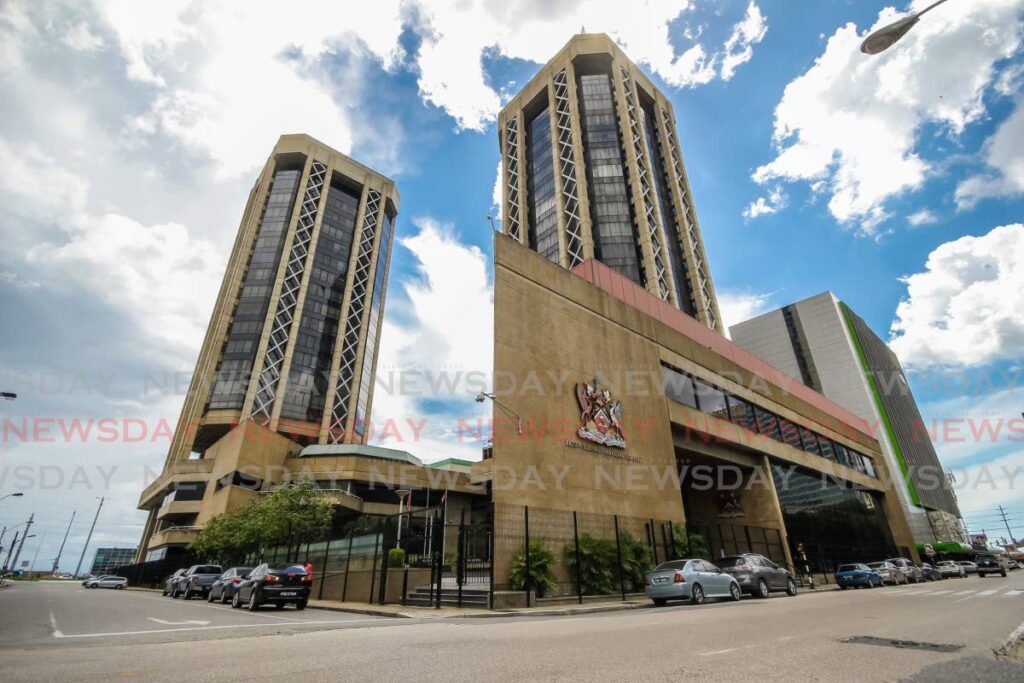Central Bank: Government in $4.3b deficit after 3rd quarter of 2023/2024 financial year

THE Central Bank said declines in both international commodity prices and domestic energy production led to an overall deficit of $4.3 billion on the central government fiscal accounts for the first nine months of fiscal year 2023/24.
In its July 2024 economic bulletin, the bank said central government revenue declined by $5.5 billion (year-on-year) to $35.0 billion, owing to a falloff in energy revenues, while expenditure fell by $1.1 billion to $39.3 billion.
It said adjusted general government debt outstanding (which excludes debt issued for sterilisation purposes) increased to $141.1 billion at the end of June 2024 from $136.4 billion at the end of September 2023.
It said headline inflation picked up slightly to 0.7 per cent (year-on-year) in June 2024, from 0.3 per cent in January 2024. It said the uptick reflected higher food inflation (2.3 per cent) while underlying price pressures (core inflation—which excludes food prices) receded to 0.2 per cent in June 2024 from 1.0 per cent in January 2024.
It said labour market conditions softened, while inflation remained subdued. According to the Central Statistical Office (CSO), the unemployment rate measured 5.4 per cent in the first quarter of 2024, higher than the 4.9 per cent recorded in the corresponding quarter of 2023.
During this period, the labour force contracted by 2,900 people and the labour force participation rate declined to 54.7 per cent from 55.2 per cent in the same quarter a year prior.
The number of people employed also fell by 5,600 people while the number of people without jobs and actively seeking employment grew by 2,700 people.
It said real GDP declined by 2.3 per cent (year-on-year) in the third quarter of 2023. Over this period, the falloff in energy sector output (10.3 per cent) outweighed the expansion of the non-energy sector (1.3 per cent).
More recent estimates from the Central Bank’s Quarterly Index of Real Economic Activity (QIEA) point to continued buoyancy in the non-energy sector in the fourth quarter of 2023 into the first quarter of 2024.
The Central Bank held the Repo rate steady at 3.50 per cent in March and June 2024 in the context of low inflation and favourable credit growth. Liquidity levels in the financial system (as measured by commercial bank reserves at the Central Bank above the required levels) decreased to a daily average of $3,825.8 million over January to July 2024, compared to $6,169.2 million over the same period in 2023.
Net domestic fiscal injections (NDFIs), usually the main driver of excess liquidity, registered a withdrawal of $3,770.1 million over January to July 2024 compared to an injection of $4,115.8 million in the same period one year earlier.
Open Market Operations (OMOs) resulted in net maturities of $2,010.0 million over January to July 2024, compared to maturities of $1,882.0 million in the same period one year earlier. At the same time, the bank’s sales of foreign exchange to authorised dealers indirectly removed $5,017.7 million from the system, $85 million higher when compared to the year-earlier period.
At a special meeting on July 19, the Monetary Policy Committee (MPC) decided to lower the reserve requirement from 14.0 per cent of prescribed liabilities to 10.0 per cent to address declining excess liquidity in the banking system. The decision is consistent with the drive towards greater reliance on market-determined monetary policy instruments, in particular open-market operations.
TT’s gross official reserves declined to US$5,741.6 million (equivalent to 8.1 months of import cover) at the end of July 2024. The change in gross official reserves indicates that the external accounts registered a deficit of US$516.3 million in the first seven months of 2024.
Domestically, the Central Bank said the non-energy sector is expected to be the main driver of growth. Strong business activity and a resurgence in consumer demand are anticipated to bolster non-energy spending. Conversely, in the short run, output from the energy sector will continue to be impeded by constrained gas supplies.
At the same time, a number of projects are underway to boost energy output. Headline inflation is expected to remain low in the closing months of 2024. However, while demand pressures are relatively small, adverse weather and/or changes in utility or other rates can impact certain prices.
Internationally, the US Henry Hub natural gas price averaged US$2.10 per million British Thermal Units (mmbtu) over the period, representing a 13.6 per cent (year-on-year) decline.
This notable fall was caused, in part, by an unseasonably warm winter and healthy production and inventory levels in the US.
However, increased demand and growing geopolitical tensions pushed crude oil prices higher. West Texas Intermediate (WTI) prices averaged US$79.13 per barrel from January to July 2024, representing a 5.3 per cent improvement over the corresponding period of 2023.

Comments
"Central Bank: Government in $4.3b deficit after 3rd quarter of 2023/2024 financial year"